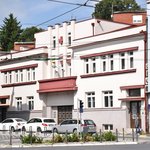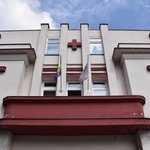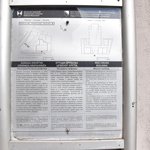During the interwar period, numerous buildings for the Red Cross were constructed throughout Yugoslavia, so that all major cities came to have facilities serving similar functions, though differing greatly in their architectural design.
In 1928, Helen Baldasar was commissioned by the Red Cross to design this building. Alongside facilities dedicated to health services, the design also included a cinema hall. The building was inaugurated in 1929. Initially, films on health education were shown there, but from the 1960s onward, it operated as the Sutjeska Cinema, screening mainstream feature films. Since 2009, this building—exceptional within the architectural landscape of Bosnia—has been listed as a protected monument.
Two different terms are used for the word “cross”. Krst is the Bosnian and Serbian form, while križ is the Croatian one. When Bosnia and Herzegovina was occupied by Croatia during the Second World War, the term krst was replaced by križ. Today, usage fluctuates, as even Bosnian media occasionally employ the Croatian form križ.



